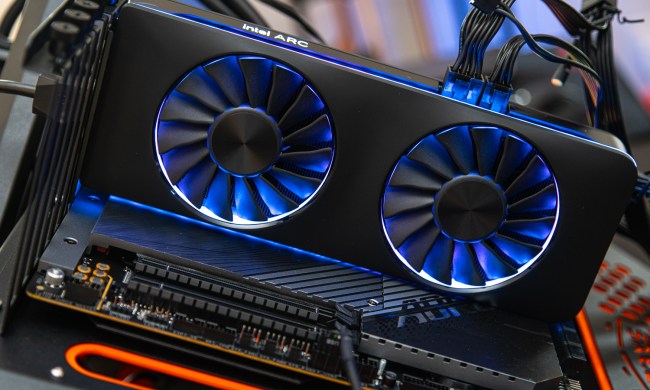AMD’s long-rumored “Big Navi” graphics card could be an absolute monster, if new rumors are to be believed. The Navi 21 GPU at the core of the new Radeon graphics card would be more than twice the physical size of the Navi 10 GPU inside an RX 5700 XT. That would make it bigger than anything AMD has released in years, with rumors that all that extra silicon will be used to make a GPU that’s twice as fast as the Navi 10.
This is an exciting prospect for AMD fans who have been waiting on a new top-tier AMD graphics card since the Vega launch in 2017. Those cards were capable, but fell behind Nvidia’s top cards, and the Radeon VII and RX 5700 XT don’t even get close to the performance of the 2080 Super and 2080 Ti. The Navi 21 GPU could change that.
Although we’re skeptical of such unqualified rumors, if these turn out to be true, AMD’s upcoming “Big Navi” card could be something quite special. The rumors appeared on Taiwanese message board, PTT, and claim that the Navi 21 GPU will be 505mm2 — that’s twice the size of the Navi 10 (251mm2) and far bigger than even the monster Vega 20 GPU in the Radeon VII (331mm2). It’s approaching the size of Nvidia’s massive RTX 2080 GPU, at 545mm2, and that’s based on a 12nm process node, whereas the Navi 21 will be built on the TSMC 7nm+ process, according to WCCFTech’s report.
This allegedly delivers a performance uplift twice that of the Navi 10. At the very high end of speculative expectations, that could mean a card that’s twice as fast as a 5700 XT. Alternatively, it would mean something more like twice the speed of the 5600 XT, which is rumored to use the same Navi 10 GPU. This is also very dependent on other factors like clock speed; Can it be retained at such larger chip sizes and with (presumably) far more stream processors? Nvidia’s RTX 2080 Ti has far lower clocks than other cards in the RTX range for this same reason.
The message board rumors suggest that the Navi 21 will use GDDR6 memory rather than the previously rumored HBM2E. If true, that could be a cost-saving measure, as HBM is notoriously expensive. With a decent size memory bus, though, that doesn’t preclude an eventual Navi 21 card from having massive memory bandwidth with 12GB or 16GB of GDDR6 that’s 16Gbps or even 18Gbps — something that Rambus demonstrated in November 2019.
All of this paints a very rosy picture of the potential for AMD’s big, RDNA 2 graphics card. Could it be the card that AMD has been working on that’s been known internally as the “Nvidia killer”? That title is a bit of hyperbole because the enormous market share advantage Nvidia enjoys (almost five times that of AMD, according to Steam’s Hardware Survey) means that no single product could entirely change AMD’s fortunes. But even if the rumors aren’t quite accurate, or need to be scaled back for whatever reason before the eventual launch of such a card, it does suggest that AMD is ready to re-enter the high-end GPU market.
That’s good news for graphics card buyers in all price brackets, whether they’re buying budget or high-end. More competition means better products at better prices and a new contender for the crown of most powerful mainstream
Big Navi could be set to change all that.




